Each self-respecting owner wants his household plot, be it a small cottage or a huge manor, looked attractive - neat tracks, a trimmed lawn, and, of course, flowers. They are able to raise the mood, calm down, and their beautiful and fragrant fragrance create a unique atmosphere of comfort.
One of the most popular perennial flowering shrubs is hydrangea. Her blossom will delight the owners and guests of the estate for several months, bringing pleasure with a large number of different shades. One of the most popular species of this interesting flower, which is grown in our latitudes is the hill dining. The fact that this is a plant and how to grow it properly - further.
Miscellaneous hydrangea: Description
The appearance of the plant is a long-term shrub, whose homeland is the Far East. Its height can reach more than two meters. Miscellaneous hydrangea is distinguished by quite beautiful colors. The buds of the plant, the length of which can reach up to 30 cm., Like most types of hydrangea, consist of two types of colors. Small - Obroat, which freasted quickly, after pollination losing their petals. Capleful flowers can reach in diameter up to 3 cm. They are saved on inflorescences for a long time, and are able to change their shade. Over time, it varies from cream to green or pink. The hortensia bush grows pretty quickly, has large-growing leaves on his shoots. Inflorescences appear on last year's shoots.
Miscellaneous hydrangea: landing and care
Miscellaneous hydrangea is a rather unpretentious plant that does not require special care. The plant prefers wet soil, and, very well tolerates the overabundance of moisture and grows even on wetlands.
From the soils for the cultivation of the buggy hydrangea, clay acidic soils will be the most optimal. When the acid-alkaline balance shift towards the base, it is necessary to carry out its deoxidation. For this purpose, ammonium sulfate, iron vigor or peat are used.
Hydrangea does not like windy squares. Therefore, for its landing, low-level sections are chosen. It can be flower beds near artificial or natural hedges, which will be able to protect the plant from sharp busting winds. When choosing a plot for planting a buggy hydrangea, it is necessary to give preference to those that have the most fertile soil and good lighting. The plant is painless tolerating air basement, so it grows perfectly along the roads. Despite the fact that the birthplace of the culture is the warmer corners of the planet, it is beautiful to carry frost. The shooting of the buffet of hydrangea is treated for the second year, and before that are vulnerable before low temperatures. However, even the victims from frost branches are able to easily recover in spring. In regions with very frosty and long winter, you can think about the collection of shelter for the plant.
In order to achieve abundant flowering, hydrangea is cutting off. Pruning hydrangea hydrangea is carried out before the start of active inactivity. Otherwise, this operation can weaken the plant and have the opposite result. The most optimal period for trimming is the end of March or the end of October. Depending on the degree of trimming of the shrub, it is possible to either intensify the growth of shoots - at the same time there is a more gentle trimming of last year, or an increase in the abundance of flowering - for this it is carried out more cardinal trimming.
In the process of flowering, the blurred hydrangea requires constant feeding. The process is carried out with mineral and organic fertilizers. The first contribute at least twice a week, the organic is once a month. At the same time, it must be remembered that the organic is introduced in a week after mineral feeding. Fertilizers contribute from the beginning of the flowering process and stop at the end of August. To strengthen the shoots of the plant no more than once a month, it is watered with a weak solution of manganese (0.5 gr. / 10l. Water).
The reproduction of Hydrangea Mettelstea
The reproduction of the shrub is carried out in two ways:
- Disposals.
- Stalling.
It should be remembered that the reproduction of the buggy hydrangea is quite complex process, and requires the use of growth stimulants. Otherwise, the risk of dieting the young plant increases.
Disposal reproduction is a fairly simple way that allows you to plant a separate seedling, in close proximity to the maternal bush. To do this, you need to take the process of the breed of the mother's bush, and without separating it from the main branches to stick alongside. For this, a small trench is digging, where the process is placed and the earth is satisted. The end of the process is neatly overwhelmed, so that he perpendicularly penetrates out of the ground. Over time, the juices from the parent plant will help the process of obtaining enough nutrients to put roots. After that it can be separated from an adult plant and transplant. The reproduction of the discharges is carried out late in spring or early summer, and the separation of the process from the parent plant is produced in a year, it is so much that you need to be equipped to put our own roots.
Shining - the process is a little more difficult than reproduction of the discharges. It can be carried out both with the help of green cuttings and with the help of weedly.
Warm branches that are planned to be used as a breeding material are separated from the plant and maintained in water for 2-3 days. After that, cuttings for planting are cut. When cutting, it is necessary to pay attention to the fact that on each of the cuttings there was a minimum of five intersals. The lower sections are processed by the growth stimulator, after which it is planted to a depth corresponding to 2/3 of the cutting length. Special attention should be paid to the preparation of a substrate for planting cuttings. For it is mixed in equal proportions peat and sand. They perfectly hold moisture near the roots, which is very important for the moisture-loving plant, which is also a blurred hydrangea. After disembarking the cutting, it is neatly covered with a plastic film. Thanks to her, moisture will accumulate around the plant, which will evaporate less. In winter, the polyethylene dome will become a kind of protection against frost and chilling winds. If the film is supresented by snow, such a cover can create a greenhouse effect, which allow the plant to survive the first winter. Specialists also advise to cover and planted plants until they achieve a three-year-old age.
For use as a planting material of green cuttings, they are cut from strong annual shoots. The operation is carried out in mid-June. The cuttings are placed in a pot with specially prepared soil. For it, two parts of the peat and one part of the sand are used. Moreover, the peat is poured onto the bottom of the pot and is covered with such a layer of sand so that the cropped end of the cutter did not take to the peat layer. Saplings need to be kept in constant humidity, richly watered. In the pots of the cuttings are kept until spring, after which the hydrangea landing is made by the blurred outdoor ground. Some breeders believe that in pots the processes should be kept until young shoots ripen, after which it is planted to land in an open ground.
Diseases and pests of the scattered hydrangea
Miscellaneous hydrangea, as well as other types of this plant, are affected by various diseases.
- Trachemicose wilment. This disease is caused by mushrooms, which at the initial stage affect the roots of the plant, and then its vascular system, filling it with itself. As a result, the inflow of nutrients from the soil is blocked to branches and shoots of the plant, which leads to its fading. Diseases disseminate through the shilling mechanism when the material for breeding is taken from the affected plant.
- Gray rot is the most common disease for the scattering hydrangea. Plant damage occurs due to the pathogen in the ground. The disease is manifested by the appearance of gray dark spots on the stems and leaves of the plant. Over time, the affected areas dry and destroy, leaving a cross-cutting hole in a sheet. Especially clearly gray rot is manifested at the abundance of precipitation. The affected plant is covered with a fluffy mushroom having a smoky gray shade. It ripens pathogens disputes, which are then falling into the soil.
- Puffy dew is another dangerous and common disease. It is manifested by the appearance of plants on the leaves of plants of plants, which has a form of a small cobweb. For some time, the stains can grow, the sheet becomes red-brown, dry and falls. In some cases, young shoots are affected during the disease. Due to the action of the pathogen, the faster bark is moving, which leads to the death of escape from winter cold.
- Pests that can become a source of danger to the blurred hydrangea, a lot. As a rule, all of them are omnivorous and harm not only this plant, but also the whole flora in the garden. The most problems of the gardeners create snails, especially large, such as grape.
- From the smallest insects, which suffer from the blurred hydrangea, it is worth highlighting a web tick, several types ofphids, bugs, happier to Pennie, as well as their larvae. These types of pests very quickly multiply and large quantities are able to cause foliage and the death of the plant.
The fight against pests is carried out by spraying with various drugs. However, it is worth remembering that the spraying during flowering plants is not allowed. The struggle against disease is mainly to maintain the optimal regime of watering, soil care, including fertilizer, as well as timely pruning and removing affected shoots.

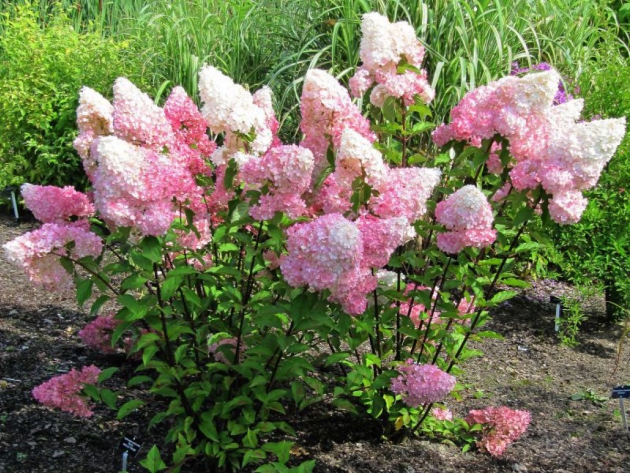
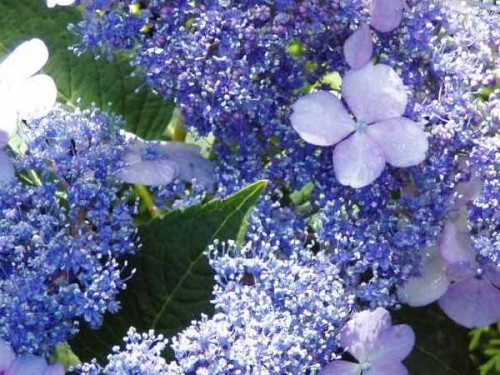
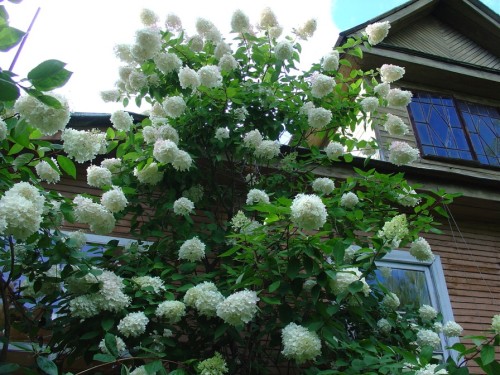
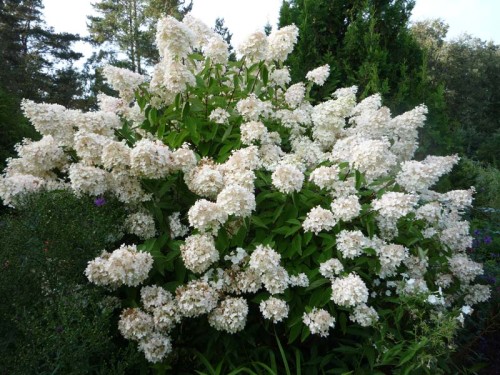
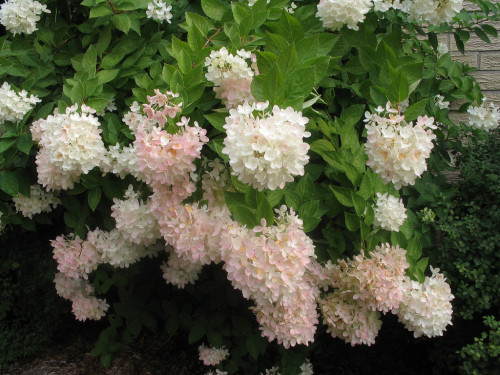
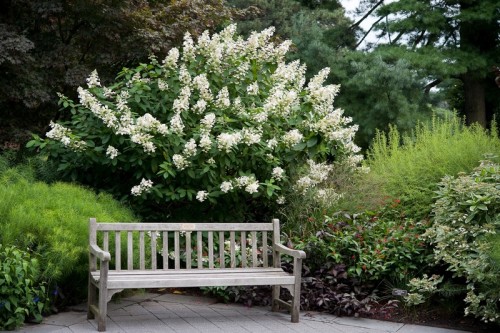
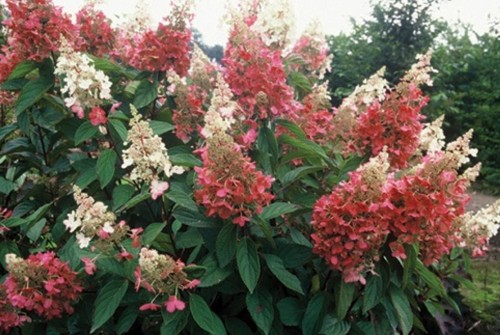
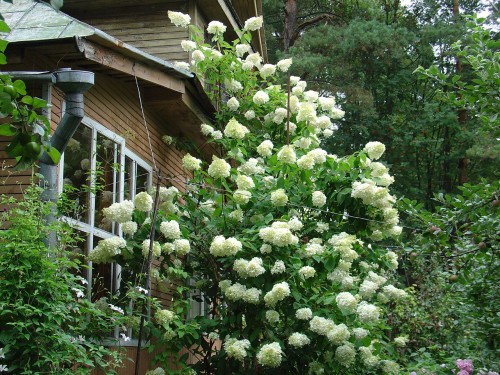
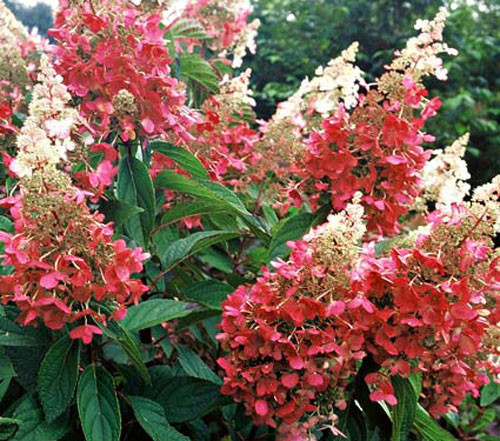
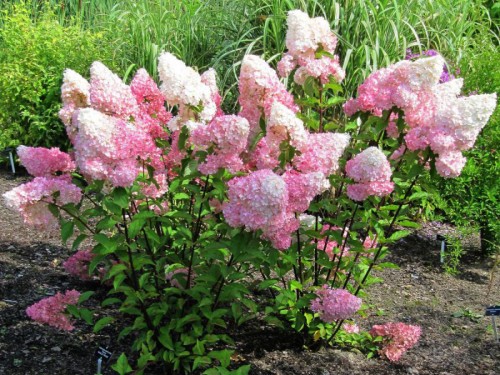












 Start a discussion ...
Start a discussion ...